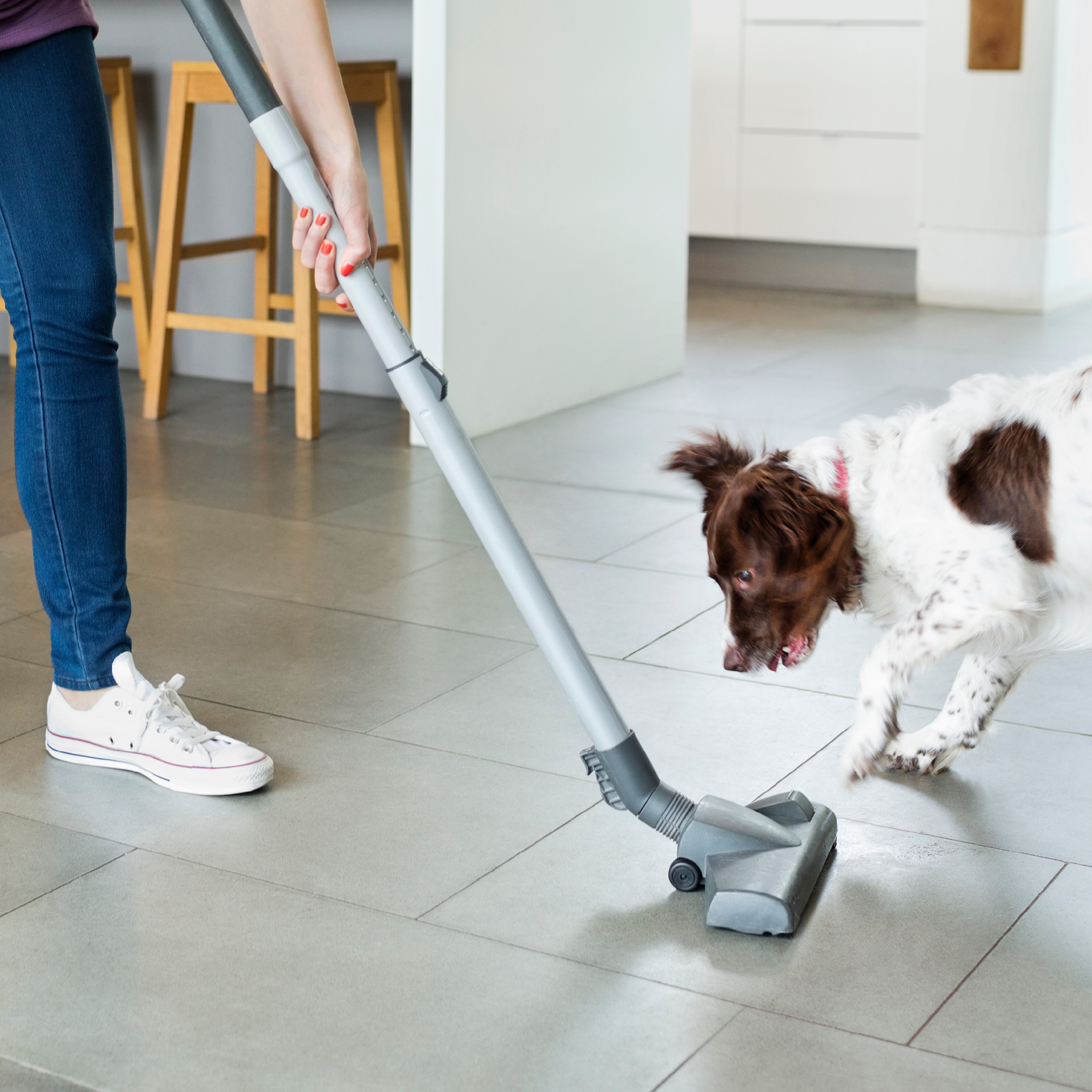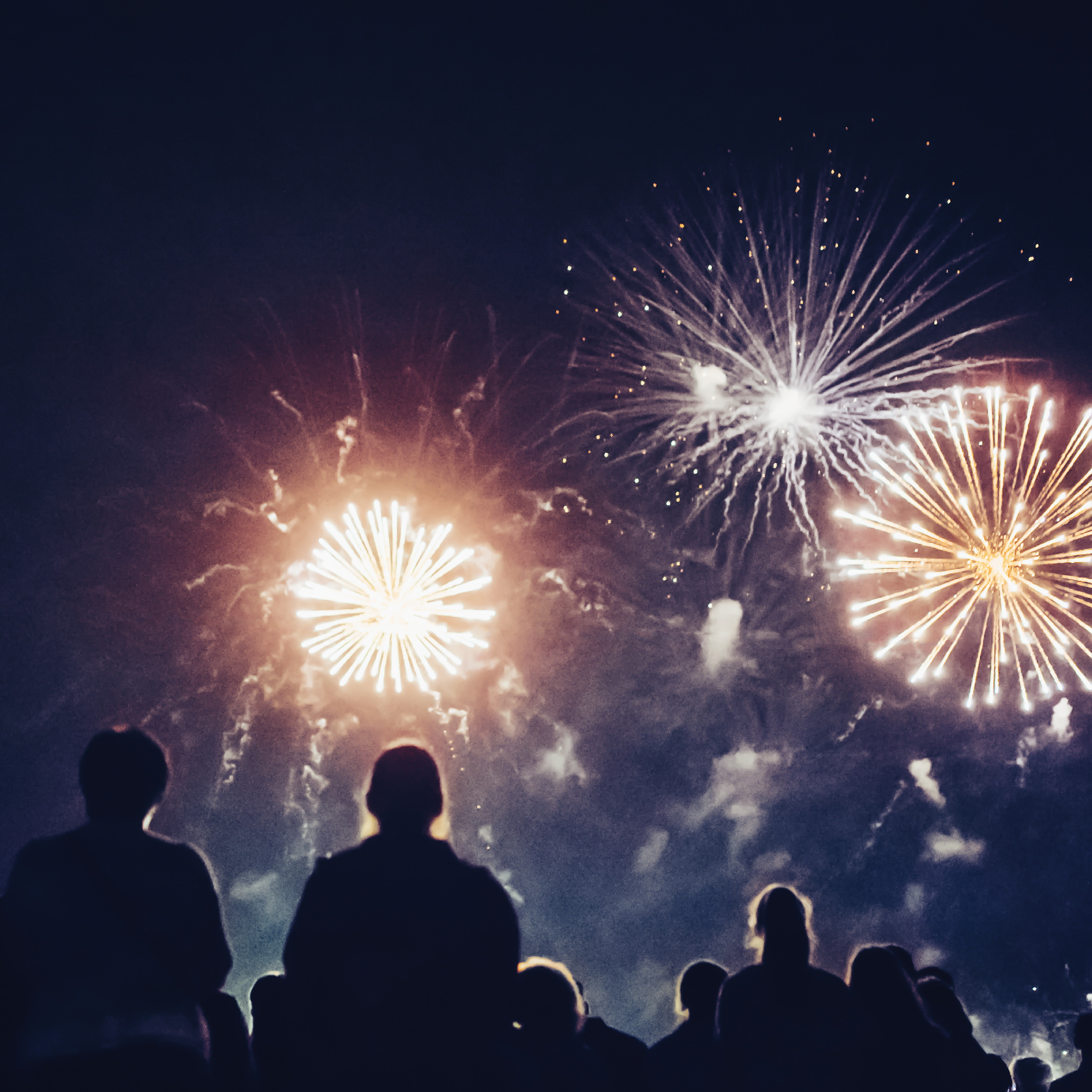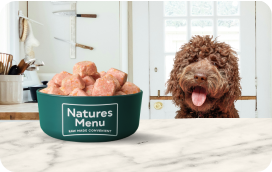HOW TO HELP YOUR DOG FEEL SAFE AND CALM WHEN LIFE GETS LOUD
Table of Contents
What is noise aversion?
Why are dogs scared of fireworks and other loud noises?
How can I tell my dog is scared?
Helping your puppy get used to loud noises
Comforting older dogs with noise aversion
How to block out firework noise for dogs
Helping your dog get used to traffic noises
Using the right tone of voice with your dog
Helping dogs with loud noises FAQs
- What noises scare dogs?
- Why are dogs scared of fireworks?
- Do you have any tips on how to block out firework noise for dogs?
- Can I train my dog to get used to loud noises?
- How can you calm down a frightened dog?
To sum it all up…
Lots of dogs are frightened by loud noises. From car horns and raised voices to slamming doors and rumbling thunder, unexpected sounds can easily unsettle our four-legged friends. But the good news is, there are lots of practical ways you can help. So as Bonfire Night approaches, we’re dedicating this blog to noise aversion. We’ll be asking, why are dogs scared of fireworks? We’ll be looking at gentle training to help your dog cope. And we’ll be sharing tips on how to block out fireworks noise for dogs this season…
 What is noise aversion?
What is noise aversion?
Noise aversion is fear or anxiety caused by unexpected or unpredictable loud noises, and it’s really common in all kinds of dogs. It can even affect gun dogs (despite their name) and breeds like border collies whose sensitive hearing makes them such good herding dogs.
Noise aversion can be triggered by all sorts of everyday sounds, like the vacuum cleaner, car alarms or traffic passing by. But at this time of year, lots of dogs find fireworks especially stressful. Some are affected more than others, so watch how your dog reacts around loud noises and if they need some extra support, we’ve got lots of practical tips you can try.
Why are dogs scared of fireworks and other loud noises?
For a start, a dog’s hearing is far more sensitive than ours, so if something sounds loud to us, it’ll definitely sound loud to them. That goes for high-pitched noises like alarms and lower-pitched sounds like thunder. Secondly, they’re creatures of habit, so unexpected things can often upset them. It’s difficult for them to understand that most loud noises are nothing to worry about, and if they’re struggling with fireworks or a thunderstorm, all those sudden bright flashes can add an extra layer of anxiety.
How can I tell my dog is scared?
Every dog shows fear in their own way, and some signs are more obvious than others. That’s why it’s important to get to know how your own dog reacts to things like loud noises.
One of the most common signs of fear is running away. It’s a natural flight response, but it can lead your dog into dangerous situations. If they run when they’re scared, they’re looking for a way to escape, and if they find an open door they’ll often race through it. That might take them into traffic or somewhere where they could get lost. If that sounds familiar, be aware of what frightens your dog and if there’s a risk of that happening, keep them on a lead or (if you’re at home) keep outside gates and doors closed.
While some dogs run when they’re frightened, others hide under beds or do things they wouldn’t, or shouldn’t, usually do. That might be going to the toilet in the house, barking loudly or disappearing upstairs when they’re not normally allowed. While you might be tempted to tell them off, take a moment to check what’s caused their behaviour, and if they’re frightened, give them the comfort they need to calm down.
More subtle signs your dog’s frightened can often be picked up in their body language. Their ears might be flattened back against their head making their eyes look wide, they might be cowering or shaking, they might be refusing to eat, or they might be dribbling, licking their lips or yawning more than usual.
Helping your puppy get used to loud noises
The best way to help your dog feel comfortable with loud noises is to desensitise them at a young age, so those sounds become part of everyday life. If you have a puppy, try to get them used to potentially scary noises when you start socialising them – at between three and 16 weeks. A great way to do this is with a specially designed scary noise playlist for dogs, and there are lots available to buy or download online.
Before you start using your playlist, make sure your puppy’s happy and relaxed. Play the noises quietly to begin with – even at volume 1 where you can barely hear them at all – they’ll be able to hear them much better than you. Your puppy will look to see how you react, so stay with them, speaking calmly and showing them everything’s ok by acting normally and carrying on with your routine daily tasks.
Gradually increase the volume over several days or weeks, all the time checking they're still comfortable. Give them cuddles and encourage them to play with their toys so they associate the sounds with positive things. Try to do this regularly and if they seem anxious, just stop, soothe them, lower the volume for a few days and try again.
Comforting older dogs with noise aversion
If your grown-up dog already has an established fear of loud noises, there are some simple things you can do to comfort them. First, get to know which sounds upset your dog so you can anticipate the things that will trigger their anxiety. Recognise the ways they show they’re afraid, so you can spot those too.
Then, when these things happen, stay with your dog, keep calm and be positive. The way you react will make a big difference, so be reassuring, even if they’re doing something they shouldn’t, like running upstairs or barking. Try using a favourite toy or treat to distract and relax them.
At a quiet, calm time you can also try using the scary noise playlists to desensitise your dog to the noises that worry them. In the same way as you would for a puppy, start quietly, build up gradually, do it regularly and give lots of reassurance.
How to block out firework noise for dogs
 Why are dogs scared of fireworks? Well, it’s not just the loud, unexpected noises – it’s the sudden flashes too. With that in mind, one of the simplest things you can do is stay home with your dog if you know there are likely to be fireworks nearby. Keep windows and curtains closed to hide the flashes and muffle the sound. Because their hearing is so sensitive, that probably won’t be enough to block out firework noise for dogs completely, so try turning on the TV or radio to drown out the sound and give them a distraction. There are even calming playlists and dedicated doggy TV channels that you might like to try. Encourage them to play with their toys, cuddle up to you or have some of their favourite treats.
Why are dogs scared of fireworks? Well, it’s not just the loud, unexpected noises – it’s the sudden flashes too. With that in mind, one of the simplest things you can do is stay home with your dog if you know there are likely to be fireworks nearby. Keep windows and curtains closed to hide the flashes and muffle the sound. Because their hearing is so sensitive, that probably won’t be enough to block out firework noise for dogs completely, so try turning on the TV or radio to drown out the sound and give them a distraction. There are even calming playlists and dedicated doggy TV channels that you might like to try. Encourage them to play with their toys, cuddle up to you or have some of their favourite treats.
If your dog runs or hides when they’re scared, creating a safe, cosy space can be helpful when you’re expecting fireworks. Try making a den under the table, or using a children’s play tent, filling it with cushions and putting their bed or toys inside. Whatever you create, make sure they’re close to you. Put yourself in their position, give them plenty of attention and keep things calm and positive. If your dog runs behind the sofa, try to make them a safe space there, or wherever they feel most comfortable.
Helping your dog get used to traffic noises
From rumbling lorries to noisy car horns, it’s common for dogs to be anxious about traffic sounds – and that can make life difficult when you’re out, or even at home if you live near a busy road. Because traffic is such a difficult thing to avoid, it’s a good idea to try gently desensitising your dog.
You can try using a scary noise playlist, or you can put the same kind of techniques into practise when you head out for a walk. Look for a park or field where there’s a busy road at one end and, keeping your dog on a lead, start at the opposite, quieter, end. Gradually work your way closer to the noisy road each time you visit, taking it day by day, bit by bit.
Again, be really positive and help them associate the place with having fun. It’s a good idea to take some snacks as a reward and our Natures Menu Meaty Treats are a great on-the-go option. If your dog does become anxious, walk them back to where they felt comfortable, give them lots of encouragement, then slowly move forwards again.
Using the right tone of voice with your dog
It’s not just environmental noises that can make a difference to the way dogs feel – the sounds we make can have a big impact too. That’s why it’s important to think about the tone you use when you talk to your dog.
High-pitched voices create excitement and intrigue, so they’re perfect for playtime, positivity and rewards, rather than letting your dog know something isn’t right. For the same reason, squeaky balls and toys are good for rewarding your dog or calling them back to you.
Deeper voices show disapproval, so only use them if you’re giving a cue to your dog that you need to make clear and concise, such as ‘wait’ or ‘stay’.
Calm, soft, even tones are best for soothing dogs who are struggling with noise aversion. By speaking in this way you’ll be showing them you’re not worried, everything’s ok and there’s no need to be frightened.
Helping dogs with loud noises FAQs
What noises scare dogs?
Some of the most common triggers are fireworks, thunderstorms, household appliances, traffic, alarms, shouting and slamming doors.
Why are dogs scared of fireworks?
Dogs are often scared of fireworks because they make loud, sudden, unexpected noises that they don’t understand. Their bright flashes add an extra layer of confusion and alarm.
Do you have any tips on how to block out firework noise for dogs?
Yes. Try to stay with your dog, close windows and curtains, make a cosy den, switch on the TV or radio, distract them with toys and treats, and stay calm and positive.
Can I train my dog to get used to loud noises?
Yes. You can buy or download scary noise soundtracks to help desensitise them, or if your dog’s afraid of traffic noises, you can gradually adjust your walking route to get them used to the sound.
How can you calm down a frightened dog?
Keep calm and be positive. Stay with them and talk to them in a soothing, even tone. You can also try using treats or toys to switch their attention to something they enjoy.
To sum it all up…
Being afraid of loud noises like fireworks or traffic is really common in dogs, and they all show their fear in different ways. If your dog’s struggling, take the time to notice what triggers their anxiety and how they show it. Try some of our tips on how to block out firework noise for dogs and, at a calm moment, give some of our desensitising techniques a go. Above all, remember your dog sees you as their best friend – so reassure them, be patient, and treat them like you’d want a great friend to treat you.








 What is noise aversion?
What is noise aversion? Why are dogs scared of fireworks? Well, it’s not just the loud, unexpected noises – it’s the sudden flashes too. With that in mind, one of the simplest things you can do is stay home with your dog if you know there are likely to be fireworks nearby. Keep windows and curtains closed to hide the flashes and muffle the sound. Because their hearing is so sensitive, that probably won’t be enough to block out firework noise for dogs completely, so try turning on the TV or radio to drown out the sound and give them a distraction. There are even calming playlists and dedicated doggy TV channels that you might like to try. Encourage them to play with their toys, cuddle up to you or have some of their favourite treats.
Why are dogs scared of fireworks? Well, it’s not just the loud, unexpected noises – it’s the sudden flashes too. With that in mind, one of the simplest things you can do is stay home with your dog if you know there are likely to be fireworks nearby. Keep windows and curtains closed to hide the flashes and muffle the sound. Because their hearing is so sensitive, that probably won’t be enough to block out firework noise for dogs completely, so try turning on the TV or radio to drown out the sound and give them a distraction. There are even calming playlists and dedicated doggy TV channels that you might like to try. Encourage them to play with their toys, cuddle up to you or have some of their favourite treats.